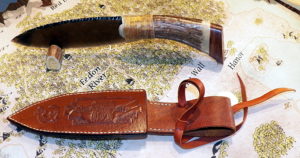This month’s subject for our Fictorians posts is about small and local publishers.
 I’ll just get this out of the way right now. I live in a rural area in Arkansas and the closest significant publisher of sci-fi or fantasy books is far enough away that distance simply isn’t relevant.
I’ll just get this out of the way right now. I live in a rural area in Arkansas and the closest significant publisher of sci-fi or fantasy books is far enough away that distance simply isn’t relevant.
So that leaves “small publishers.”
I’m afraid I don’t have any real experience there either.
Well, unless you consider my self-publishing under my own LLC I created to have a separate business unit for publishing. That’s a pretty small publishing company, being just a part-time portion of me.
But here’s the thing. While the concept of being your own publisher was crazy talk two decades ago, it is getting more and more feasible every year. With access to eBook sales platforms like Kindle, Kobo, Smashwords, etc. it is true that a self-published author can reach an arbitrarily large audience. Add in the print on demand services like Amazon’s CreateSpace, and that reach includes people who still want to hold a dead tree in their hands.
The major problem with that sort of self-publishing is the lack of support that a traditional publisher provides. But even that is changing as smaller “traditional” publishers are offering pared down services that may not include the marketing, promotion, printing and editing services they used to offer to all authors. A savvy self-published author can find free-lance services for editing, graphics, proof-reading, etc. Which really leaves promotion as the major area that traditional publishers still offer a major benefit to authors.
But I’m wondering how much longer that will be the case with crowd-sourcing services growing, and social media giving authors a platform with worldwide reach without an agent, a publisher or deep pockets.
I plan on trying one more time with my next book to get a traditional publishing contract. But if that doesn’t work out, I will probably spend the rest of my life self-publishing. At least until I’m so successful at that, that the publishing houses come to me.
I can dream, can’t I?






